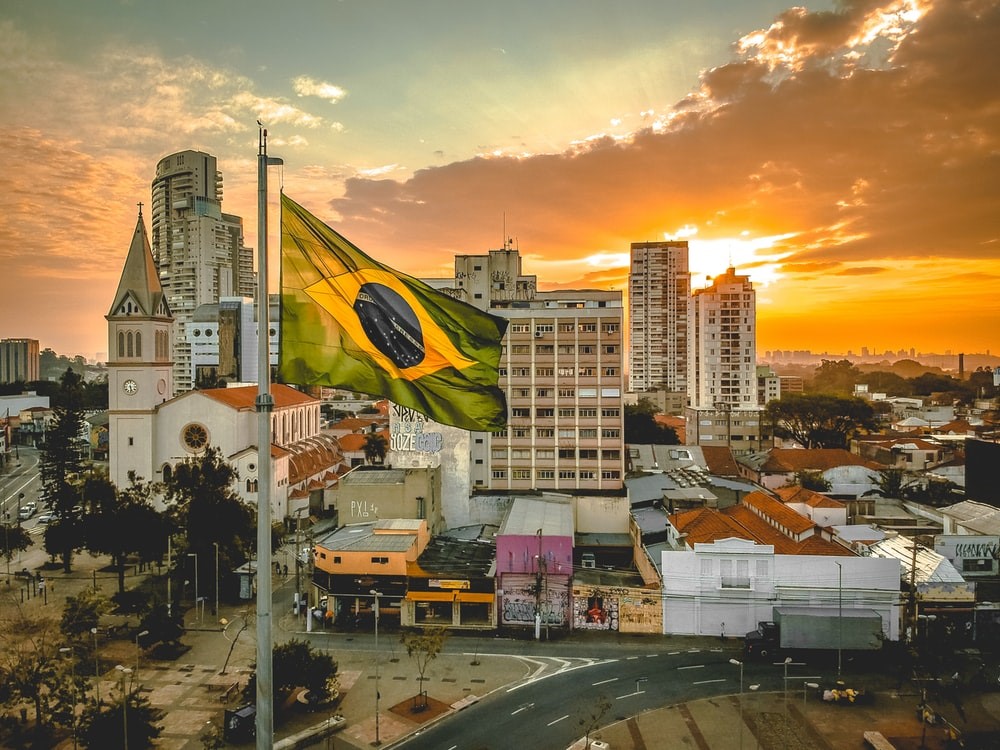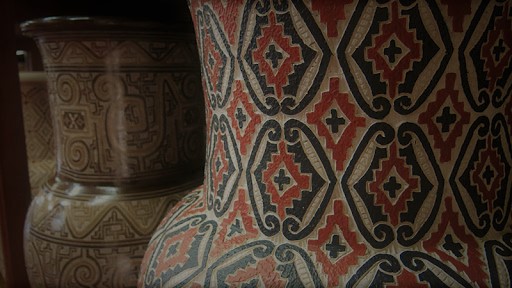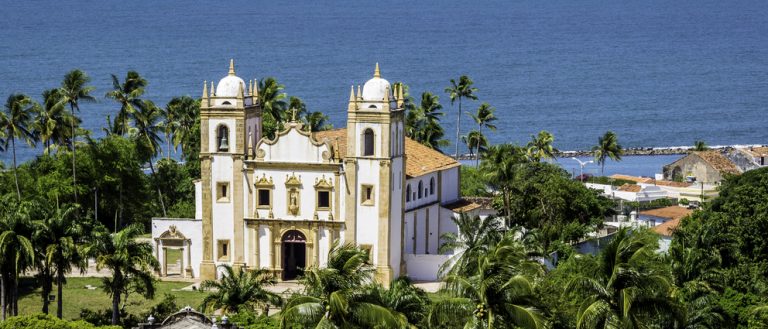Nowadays there are countless ways to explore, by land by sea or by air – the possibilities are endless. Brazil is one of the few places to offer a unique means of transport, in total harmony with the ambience: the beach buggy.
These small, light and easy-to-drive vehicles are capable of driving almost everywhere and allow the adventurous tourist to ride in idyllic landscapes, far from the landmarks attached to traditional Brazilian tour itineraries.
California dreaming : The dune buggy emerges
Although the buggy you will find in the Northeast of Brazil is still quite similar to the original, this little machine was invented much further north, in California to be precise. In the sixties, this western state of the USA quickly became the symbol of a counter-culture advocated by young people in revolt against the established order.
It was a time of open protest, the rejection of consumer society and opposition to the war in Vietnam. These movements were developing against the backdrop of protest-songs and pop music. This denial of so-called “bourgeois” society was reflected at all levels, even transport.
In this state where one lives on the sand and under the sun, the traditional bulky car was no longer suitable for an idealistic youth. Not to mention the price! That’s when Bruce F. Meyers arrived in the early sixties.
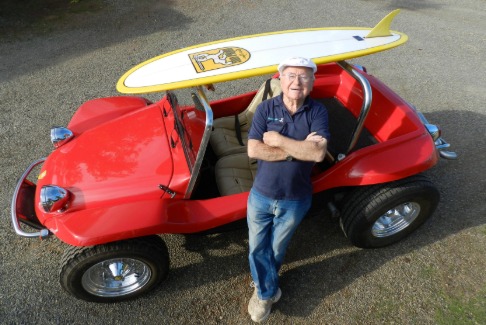
The Buggy, a crazy idea from Bruce Meyers
Bruce worked in the maritime industry, specifically in the manufacture of everything fibreglass; hulls of boats, floats and especially surfboards. He then imagined a small off-road vehicle that could traverse the huge beaches to reach the ideal spots.
He designed an ultra-light vehicle based on a chassis-beam (chassis consisting of a central beam connected to two axles, all supporting the engine, suspensions and bodywork, ensuring lightness without harming the rigidity) and a fibreglass polyester body.
There are two very basic seats on each side of the beam and at the rear, the reliable and economical VW Beetle engine. A rollbar protects the passengers in case the vehicle overturns, but also serves as a surfboard rack!
The “Meyers Manx” buggy (a tribute to the famous Norton Manx motorcycle) made its first splash along the waves of the Pacific in 1964. It had a difficult start in life because the craft was relatively expensive and was sold as a (Do it yourself) kit. Only 12 kits were produced between ‘64 and ‘66. However, it quickly established itself as an outstanding motorsport vehicle, becoming a must-have for off-road racing.
In 1967, everything changed when Bruce made the cover of Car & Driver magazine. Success was immediate; orders soared, more than 6000 vehicles were built and the buggy would eventually be replicated around the world.
Although its creator was forced to leave his company in the early seventies for tax reasons, the iconic image of freedom on four wheels is now recorded history. Because of its structure as well as its rounded look, the original buggy did not satisfy all tastes and gradually disappeared in favor of more modern, racy machines.
But, as for any unique creation, some passionate users around the world continue to utilize these vehicles and their different replicas. Among them, the Brazilians, seeing in the buggy a robust vehicle perfectly cut for their 7491 kilometers of coastline. They were enthusiastic to the point of developing their own very successful brand, Fyber, adopted en masse by the inhabitants of the Northeast coast of Brazil.
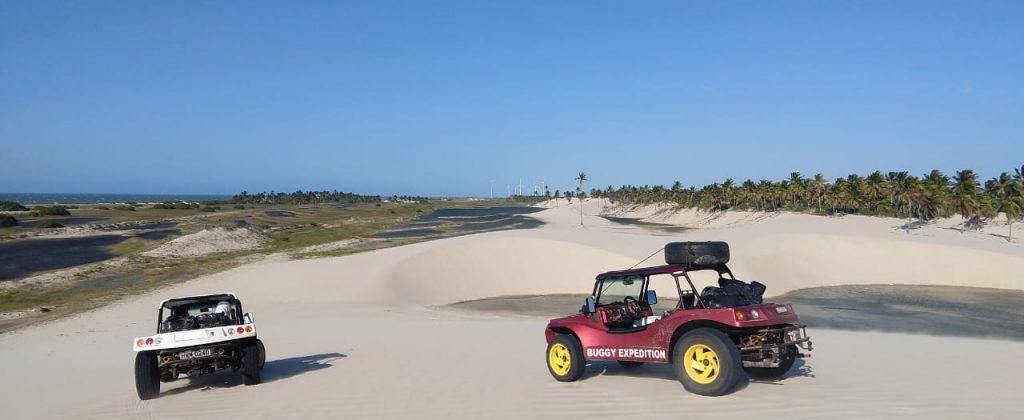
The Buggy and the beaches of Brazil
In Brazil, the buggy was introduced by the middle / upper classes, who had second homes along the coast which were often difficult to access. Only accessible by dirt tracks or between the dunes, these more affluent families spent their weekends and holidays here with their children surfing. The buggy first conquered the southern shores, then gained the entire coastline right up to the Northeast, where it could fully flourish on the beaches stretching to infinity.
The following points are the main reasons its popularity took off here in Brazil:
- The VW Cocinelle engine is easy to maintain and spare parts and mechanics are ubiquitous given the popularity of the iconic Volkswagen car.
- With its low weight, wide rear tires and high acceleration, the buggy allows you to move easily from village to village along paths or long beaches, where traditional cars would certainly not pass.
- With its polyester-fibreglass shell, the buggy withstands salt-water erosion better than any other vehicle.
- The price of a used buggy remains much more reasonable than that of a car.
These qualities make the buggy an ideal machine for the modest populations of the coast who quickly began to buy the used models resold by their more fortunate neighbors.
For the last thirty years, buggies have been part of the Nordeste landscape, both as a leisure vehicle for the middle classes and as everyday transport for the population living on the coast.
With the beaches between Natal and São Luís exploding in popularity as holiday destinations and the discovery of this coastline by kitesurfers, another boom in the use of buggies has taken place since 2005. These extreme sportsmen and women see it is a perfect tool for their famous downwind kitesurf trips. They will ride for hundreds of kilometres while someone follows them on the beach as back up. For tourists, the buggy is the best way to go along the beaches between Natal, Fortaleza and Jericoacoara to enjoy a wild coastline extending as far as the eye can see.
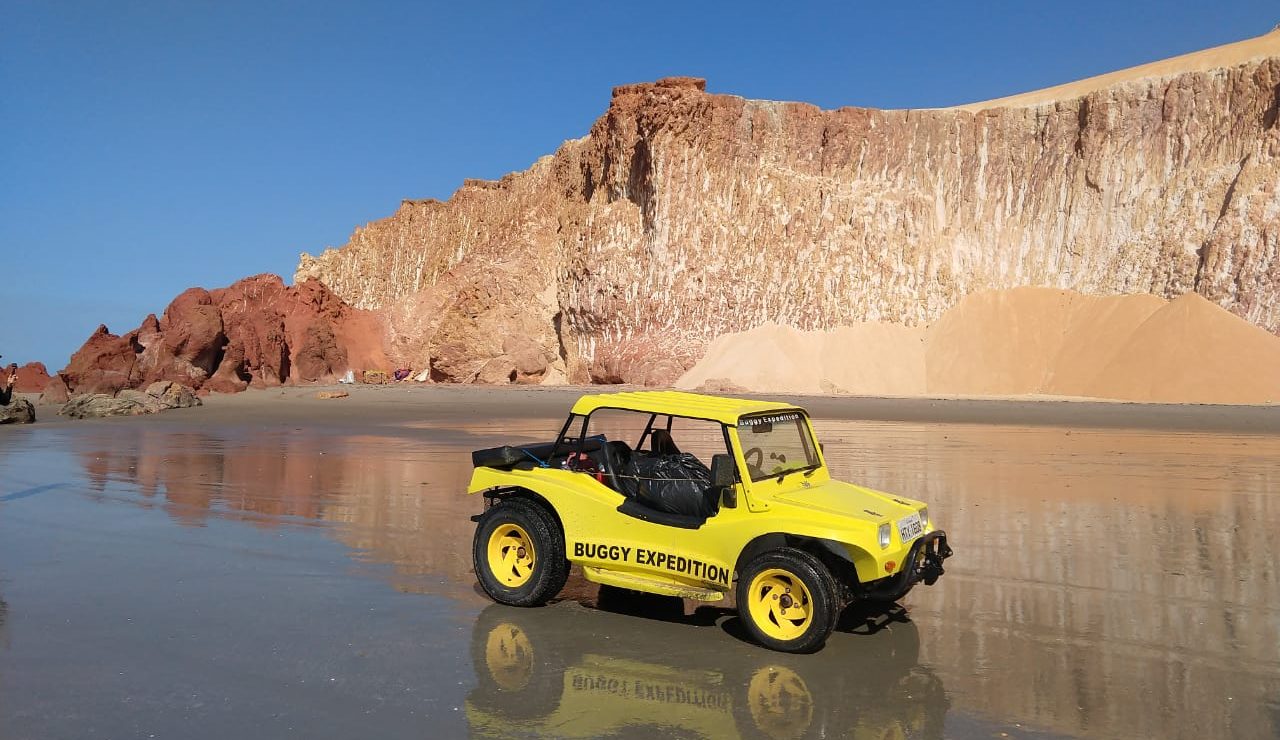
Safely explore the beaches of Nordeste in your buggy
One of the most popular Brazil Selection options offers you the chance to discover this part of the Brazilian coastline driving buggies specially chartered for you. You can take a tour between the cities of Natal and Fortaleza in 4 stages of a day or a buggy trip from Fortaleza to Jericoacoara in 2 days. The most adventurous can have 8 days of spectacular views, fun driving and magnificent sunsets on the edge of the Atlantic Ocean in a wild, mineral landscape of dunes and cliffs.
The dune buggy gives you the freedom to ride stress – free at the edge of the most beautiful beaches of the country, to be able to stop where you want and leave when you want, to make the most of the sun and the healthy sea air. Nevertheless, this freedom can only be enjoyed by all when some basic rules and etiquette are adhered too.
It is easy to underestimate the vast Northeast coast of Brazil, especially if you do not know the country and the locality. The never-ending maze of sand tracks offer a breath-taking experience but can be treacherous if one is not careful.
Therefore, to allow you to “roll” relaxed and with a totally liberated spirit, we entrust you to the care of your certified driver – guide. They will select the tracks and show you the way, a task that is impossible for someone who does not know the area. They will also take care of contacting and booking the ferries for crossing rivers and flooded areas and will assist you in case of a mechanical problem as well.
He will explain and show you the specifics of how to handle these small vehicles. Although designed to excel in all terrains, it is advisable not to take thoughtless risks in the sand or at the edge of the water. Your guide will teach you how to avoid any pitfalls by adopting a flexible and responsive driving style. Your trip will be one of pure pleasure and safety that only good organization can provide. Note, it is asked that you sign a consent form and leave a deposit before starting your adventure.
All you need to do is choose your route and discover the intoxicating sensation of rolling hair in the wind from beach to beach, and village to village.

